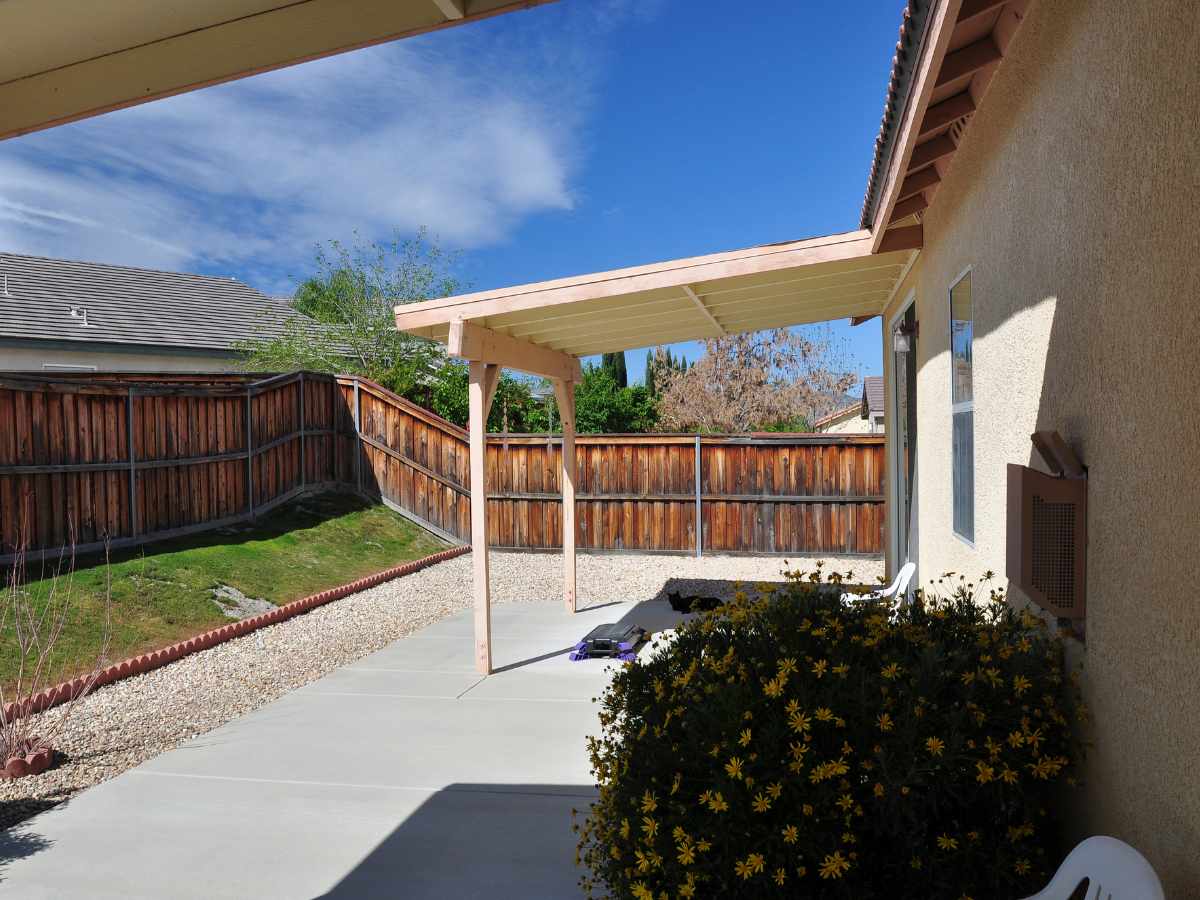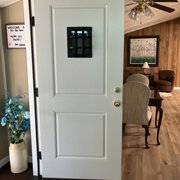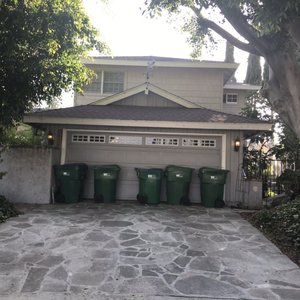If you want to create a comfortable outdoor living space protected from the sun and rain, an aluminum lattice patio cover may be just what you need. These covers are not only stylish and versatile, but they also provide several benefits for you and your home. For instance, they can help reduce heating and cooling costs by shading your home’s windows and doors from direct sunlight.
They can also protect outdoor furniture from fading or damage caused by the elements. Another great benefit of aluminum lattice patio covers is their durability.
Unlike wood or other materials that can warp or rot over time, aluminum is resistant to rust, corrosion, and insect damage. This means that your patio cover will last longer with minimal maintenance.
Proper Installation for Longevity and Safety
While aluminum lattice patio covers are relatively easy to install, it’s essential to ensure they are installed correctly to maximize their longevity and safety. A poorly installed patio cover can become unstable during high winds or heavy rain, posing a risk to anyone underneath it. Proper installation includes preparing the area where the patio cover will be placed by clearing debris away from the site and ensuring the ground is level.
It also involves determining where posts should be placed based on the project’s desired size and what type of lattice pattern you want on top. Once the area has been prepared, posts must be set securely in concrete so they will not shift over time.
Beams must then be attached securely using brackets so they don’t loosen up due to wind or heavy precipitation. The rafters should also be appropriately spaced based on what style of lattice pattern you’ve chosen.
Installing lattice panels between rafters requires precise measurements so that there are no gaps between panels once everything is finished. Overall, installing an aluminum lattice patio cover ensures maximum benefits for years.
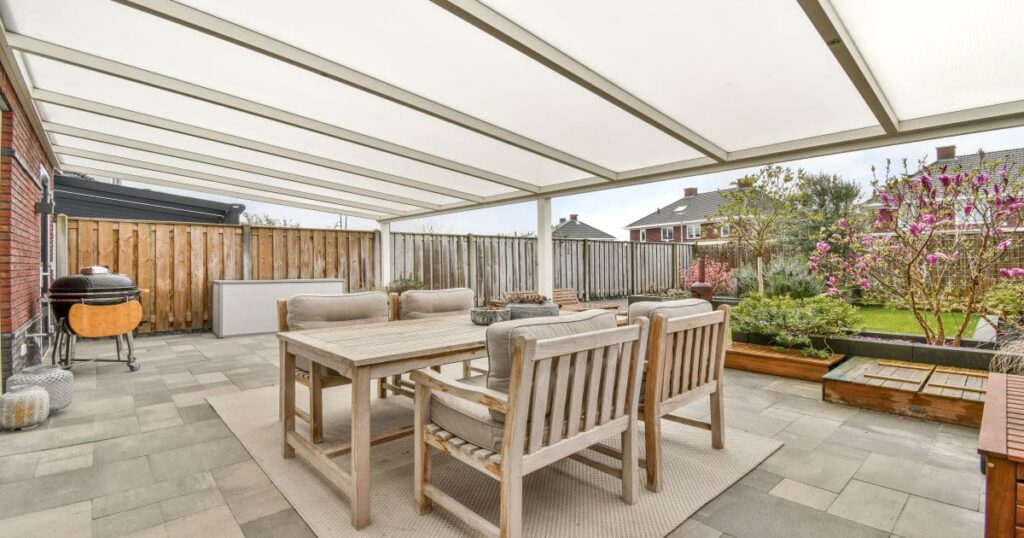
Materials and Tools
Installing an aluminum lattice patio cover requires a list of specific materials and tools essential for a successful installation. Here is a comprehensive list of the necessary materials and their respective purposes:
Materials:
- Aluminum lattice panels – The main structure of the patio cover.
- Aluminum posts – Support beams that will keep the lattice panels in place.
- Concrete mix – Essential for setting the posts in place securely.
- Metal brackets – Used to attach beams to the posts.
- Hanger bolts and lag screws – Used to attach rafters to beams and secure them in place.
- Screws or clips – Used to secure lattice panels onto rafters.
- End caps – Finishing touches that add aesthetic value while protecting against water damage.
Tools:
- Tape measure – Critical for measuring distances accurately during installation procedures.
- Level – Ensures proper alignment of posts, beams, and rafters at correct angles.
- Circular saw or jigsaw – Necessary to cut lattice panels into desired shapes or sizes according to specifications.
- Drill – Essential tool used for drilling pilot holes into lumber, metal brackets, hanger bolts, and lag screws, among others.
- Masonry drill bit – Required if you install your aluminum lattice patio cover on concrete surfaces where post holes will be drilled out.
- Gloves and eye protection – Safety gear is essential when working with concrete mix and cutting through lumber with power tools such as saws or drills.
To ensure a successful installation process, it is essential to make sure you have all the necessary materials and tools before starting. Double-check all the required items listed above. It’s also important to note that some materials may come with the lattice patio cover kit or need to be purchased separately.
When selecting these materials, ensure they are high-quality and durable for longevity. Avoid purchasing cheap materials as they can lead to problems in the long run, such as breakage or rusting over time.
Another factor to consider when purchasing your aluminum lattice patio cover kit is whether it comes with installation instructions. The instructions can be invaluable for reference purposes during installation, especially if this is your first time building a patio cover.
Preparing the Area
Clearing the Area Where the Patio Cover will be Installed
Before starting your patio cover installation project, it is essential to make sure that you have enough space to accommodate the new structure. Begin by clearing away any debris, rocks, or other obstacles that may be in the way. Trim back any overgrown shrubs or trees to prevent them from interfering with installation.
It is also essential to ensure that there are no underground utilities or pipes in the area where you plan to install your patio cover. Before digging, check with your local utility company to avoid potential damage or safety hazards.
Leveling the Ground to Ensure Stability
Once you have cleared the area, it’s time to level the ground. A level surface is essential for adequately stabilizing your patio cover structure and will help prevent future problems, such as leaning posts or uneven lattice panels. A simple way to level out an existing surface is by using a carpenter’s level and a shovel.
Start at one corner of your designated area and place the level on a straight board. Move it around until it shows perfectly level, then mark that point on each post location with spray paint.
Next, use a shovel or rake to remove any high spots in your marked areas and fill in low holes with soil if necessary. Once you’ve leveled all marked areas for post locations, double-check each spot with a level again before measuring and marking where posts will be placed.
Measuring and Marking Where Posts will be Placed
Before installing posts for your new aluminum lattice patio cover, measure where each post should go based on how wide you want your patio cover frame. You will need at least two people for this step; one person should hold and position one end of a measuring tape while the other takes the measurements. Mark with paint each spot with spray paint or stakes.
It’s essential to ensure that all markings are level and properly spaced. The spacing should be measured and marked every four feet from center to center to guarantee even support for your patio cover.
After marking post locations, measure and mark where you will need to dig holes by keeping a spot at least 6 inches away from the postmark on each side. These spots should be in line to ensure that each hole is dug in a straight line.
If the instructions are not included with your kit, you can find them online or ask for them from the supplier. Now that you know what materials and tools are needed, let’s prepare the area where your aluminum lattice patio cover will be installed.
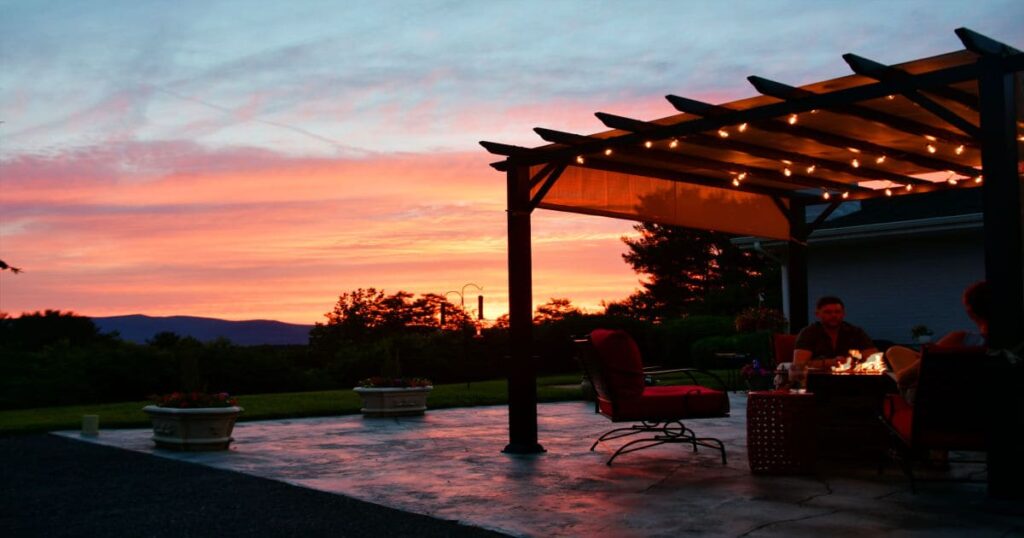
Installing Posts
Installing posts is the first step in installing an aluminum lattice patio cover. The stability of your patio cover depends on the strength and accuracy of installing the posts. Therefore, it’s essential to ensure that you’re using high-quality materials and following all proper guidelines for installation.
Digging Post Holes to Appropriate Depth
The depth of post holes depends on factors such as local building codes, the size, and weight of your patio cover, soil type, and climate conditions. Typically, post holes are dug about 24-48 inches deep. However, consult your local building department or a structural engineer for specific requirements based on location.
Once you determined the depth required for your post holes using a measuring tape or digger bar, start digging holes in each marked location using a post hole digger tool. Depending on how many posts you have to install it can take several hours to several days to complete this task.
Setting Posts in Concrete
To keep your posts secure, set them in concrete. Mix pre-mixed concrete according to instructions (usually 1 part water to 5 parts concrete mix) into a wheelbarrow or large bucket until thick enough so that it doesn’t easily pour out but still has a smooth consistency.
Place about 4 inches of gravel at the bottom center of each hole before pouring concrete over it because this will allow water drainage as well as prevent wood rotting caused by moisture from rain or irrigation systems. Pour the mixed concrete into each hole around the post until the hole is filled up at least three-quarters full.
This process may require two people if you have more than one post since one person holds it while another pours in mixed concrete from above ground level. Once you’ve filled the hole to the desired level, use a level to keep your post straight while the concrete dries.
Checking for Levelness
Once the concrete has dried, check each post’s level to ensure they are all at the same height and perpendicular to the ground. Use a laser level to check for accuracy. If one or more posts is not perfectly aligned, make necessary adjustments by adding or removing soil under them until they are at the correct height and position.
Properly installing posts ensures your aluminum lattice patio cover’s stability and durability. Dig holes at the proper depth, set posts in concrete correctly, and check for levelness before installing beams and rafters.
Attaching Beams and Rafters
Determining Beam Placement Based on Desired Lattice Pattern
Before installing the beams, determine the lattice pattern you want. You can choose from lattice patterns such as square, diagonal, or diamond.
Once you have decided on the pattern, you can determine the beam placement. Typically, for a square lattice pattern, beams are placed 24 inches apart.
For a diagonal or diamond pattern, beams are placed at a 45-degree angle and spaced differently depending on your desired look. Keep beam spacing between 24 and 36 inches apart.
Securing Beams to Posts Using Brackets and Screws
After determining the placement of the beams, it’s time to attach them to the posts using brackets and screws. First, place a rack over the top of each post where the shaft will be attached.
Make sure it is level before marking where the screw holes will go. Next, pre-drill screw holes in the bracket and post them before attaching them using screws.
Repeat this process for each beam until all are securely attached. Ensuring each shaft is level with one another once secured is essential for proper installation.
Attaching Rafters to Beams: Ensuring Proper Spacing
After securing all your beams in place, it’s time to attach rafters between each one perpendicular to their orientation. The rafters should be spaced evenly between beams according to your desired lattice pattern – usually at least 12 inches apart. To attach them properly and securely in place, use framing hardware specifically designed for outdoor construction projects, like joist hangers or rafter ties, which will help maintain spacing and provide structural support.
Using framing hardware makes attaching rafters easier by aligning boards evenly. To do this, place the framing hardware onto a beam under where the rafter will go.
Then, position the rafter into the framing hardware and attach it to the beam with screws. Repeat this process for each rafter until they are all securely placed at even spacing.
Overall, attaching beams and rafters is crucial to ensure the safety and longevity of your aluminum lattice patio cover. Properly spaced rafters and securely attached beams will provide structural support, creating a comfortable outdoor living space that can be enjoyed for years.
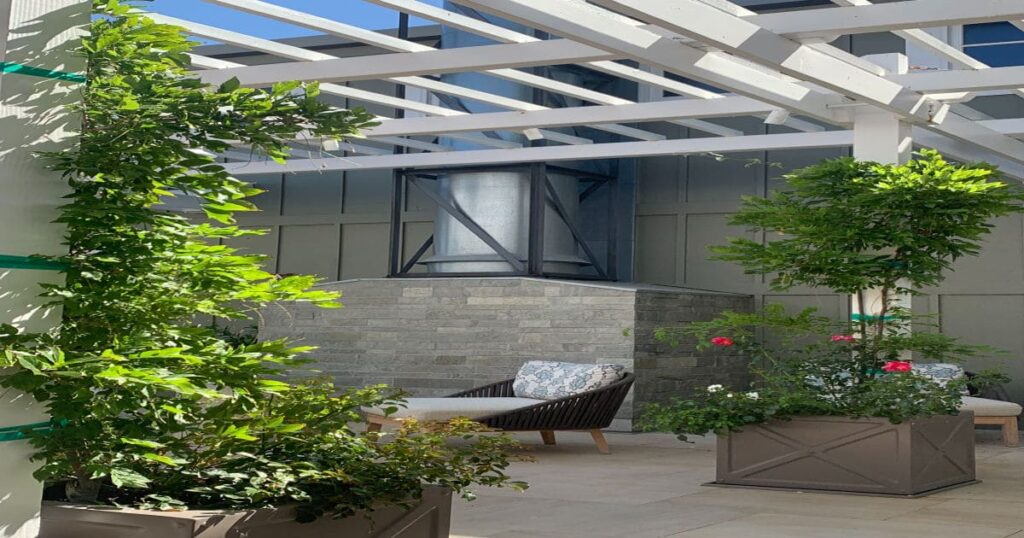
Installing Lattice Panels
Measuring and Cutting Lattice Panels to Fit Between Rafters
Before installing the lattice panels, measure between each pair of rafters to determine the size of the boards needed. Use a measuring tape to take precise measurements, and consider any odd angles or other obstacles that may affect panel placement. Once you have your measurements, cut the lattice panels to size with a circular saw.
Wear eye protection and follow all safety precautions when operating power tools. If you do not have access to power tools, you can also use a handsaw or hacksaw, which will require more time and effort.
When cutting the panels, leave enough space for expansion and contraction due to temperature changes. This is typically about 1/4 inch per 6 feet of panel length.
Securing Panels with Screws or Clips
Two main methods for securing lattice panels in place are screws and clips. To use screws, simply pre-drill pilot holes through the lattice panel, where it will attach to the rafters.
Then, secure the panel using stainless steel screws long enough to penetrate the panel and rafter without splitting either. Another option is using clips designed explicitly for securing lattice panels.
These clips snap onto each rafter’s top and securely hold the panel in place without any visible hardware. This method is often preferred for its clean look but may not be as secure as screws.
It’s important to space out your fasteners evenly along each rafter to hold the panel securely in place without causing any damage. Be sure not to over-tighten screws or clips, which can also cause damage over time.
Choosing Lattice Panel Materials
When it comes to choosing lattice panel materials, there are several options available. Common materials include wood, vinyl, and aluminum. Wooden lattice panels are chosen for their natural look and affordability.
They can be painted to match the color of your patio cover or left unfinished for a rustic look. However, wooden panels require more maintenance than other materials as they are prone to cracking, warping, and rotting over time.
Vinyl lattice panels are a low-maintenance option resistant to moisture and insects. They come in various colors and patterns to match your patio cover design.
However, vinyl may not be as strong as other materials and may become brittle in extreme temperatures. Aluminum lattice panels are the most durable option, with excellent weathering and corrosion resistance.
They also offer a modern look that complements many home styles. However, aluminum panels may be more expensive than other options.
Tips for Maintaining Lattice Panels
To keep your lattice panels looking great for years, follow several maintenance tips: – Regularly clean the panels with soap and water or a mild cleaning solution. – Inspect the fasteners periodically to ensure they are holding the panels securely in place.
– If you notice cracks in the panel material, replace them promptly.
– Apply a protective coating if desired to help prevent fading or discoloration over time.
– Keep nearby trees trimmed back to prevent leaves and debris from accumulating on the patio cover. Following these tips for maintaining your lattice panels, you can enjoy your new patio cover for many years without worrying about deterioration or damage due to neglect.
Finishing Touches
Installing an aluminum lattice patio cover involves careful planning, accurate measurement, and precise installation. However, the finishing touches are just as essential to ensure a polished final product that will enhance the aesthetics of outdoor living space. This section discusses two of the most important finishing touches – adding end caps to beams for a finished look and painting or staining the patio cover as desired.
Adding End Caps to Beams for a Finished Look
End caps serve both functional and decorative purposes. Functionally, they help protect the beams from moisture damage by preventing water from accumulating. Decoratively, they provide a clean and finished look to your lattice patio cover.
You can easily attach end caps to the ends of each beam using screws or adhesives. End caps are available in various materials, such as vinyl or aluminum. It’s essential to ensure that they fit snugly on the beam ends without any gaps that could allow water infiltration.
When selecting end caps, consider their color and style compatibility with your lattice panels and overall design theme. Some manufacturers offer end caps in colors that match their lattice panels so you can achieve a cohesive look.
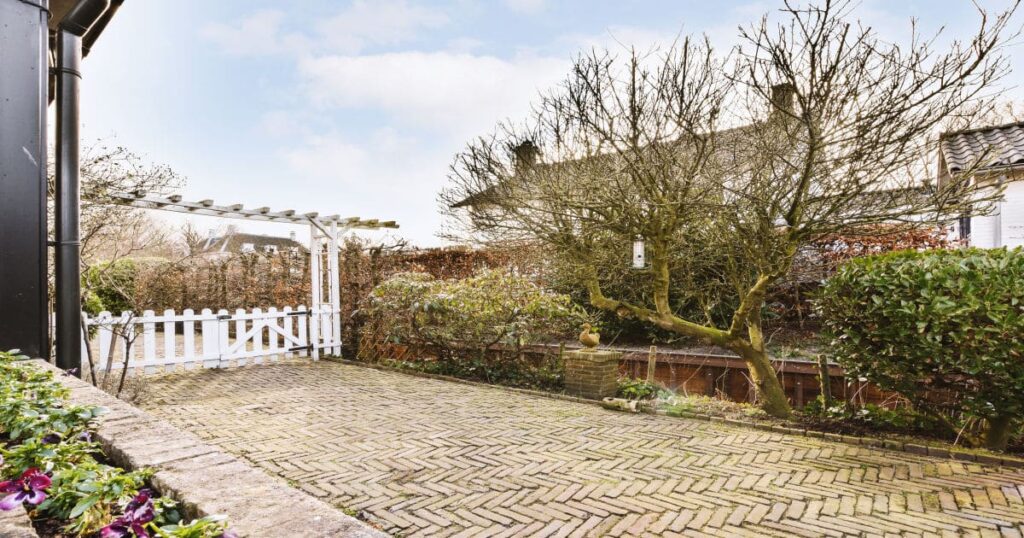
Painting or Staining the Patio Cover as Desired
While aluminum lattice patio covers come in several standard colors, such as white, beige, brown, or black, you may wish to customize yours to match your home’s exterior paint color or personal preference. Painting or staining an aluminum patio cover is possible but requires some preparation. Firstly, ensure that all surfaces are clean and dry before applying any paint or stain.
If there is any dirt on them, it will affect adhesion quality. Use soap and water with a soft-bristled brush for cleaning, then rinse thoroughly with water.
Secondly, sand all surfaces lightly using fine-grit sandpaper (120 grit) to remove any gloss and create a rough surface for better adhesion. Make sure to wipe off the sanding dust with a clean cloth.
Thirdly, apply paint or stain using a roller or brush according to the manufacturer’s instructions. Apply it in thin, even coats and avoid drips or overlaps.
Allow each to dry before applying another coat. Always use high-quality paint or stain formulated for outdoor use. It withstands exposure to UV rays and weather elements.
Properly painting or staining your aluminum lattice patio cover will not only beautify it but also extend its lifespan by protecting it from damage caused by environmental factors. Adding end caps and painting or staining an aluminum lattice patio cover are essential finishing touches that complete the installation process.
They enhance your patio cover’s durability, functionality, and aesthetic appeal while protecting it from moisture damage and weather elements. Selecting suitable end caps and high-quality paint/stain carefully will pay off in achieving a stylish look that lasts for years!
Final Inspection and Tips for Maintenance
After successfully installing your new aluminum lattice patio cover, it’s essential to conduct a final inspection to ensure everything is in its proper place. Check all the screws, bolts, and brackets to ensure they’re tight and secure.
You should correctly attach the lattice panels. If you notice anything loose, make adjustments immediately.
Follow these tips to maintain your new patio cover’s pristine condition.
– Clean regularly: Use a soft brush or cloth to remove debris accumulating on your patio cover.
– Inspect regularly: Conduct regular inspections to ensure no cracks or breaks in the lattice panels. – Trim nearby plants: Keep tree branches and other nearby plants trimmed back from your patio cover to prevent damage.
– Repaint as needed: Over time, paint can peel or fade. Repaint the frame as needed to keep it looking fresh.
New Outdoor Living Space Under Your New Aluminum Lattice Patio Cover
Now that you’ve installed an aluminum lattice patio cover, it’s time to enjoy your new outdoor living space! This versatile addition is perfect for relaxing or entertaining guests while enjoying protection from the elements. Consider adding comfortable outdoor furniture such as chairs, tables, and a cozy fire pit.
The filtered light shining through the patterned lattice adds beauty while creating a relaxing space that doesn’t feel too enclosed.
An aluminum lattice patio cover is perfect for any occasion. So grab a book and enjoy reading outside on a sunny day without worrying about sunburn! Your new aluminum lattice patio cover is a game-changer for outdoor living.
Frequently Asked Questions
What are the Benefits of Choosing an Aluminum Lattice Patio Cover Over Other Materials?
Aluminum lattice patio covers are durable, low maintenance, and resistant to rust and decay. They have flexibility in design and can be customized to fit various architectural styles.
How Does an Aluminum Lattice Patio Cover Provide Shade While Allowing Natural Light?
The lattice design allows partial sunlight to pass through, balancing shade and natural light. This design helps to keep the area cool while still enjoying outdoor brightness.
Can I Install an Aluminum Lattice Patio Cover myself, or Do I Need Professional Help?
It is generally recommended to hire professionals. This ensures proper installation and adherence to local building codes.
How Long Does an Aluminum Lattice Patio Cover Last?
With proper installation and minimal maintenance, they can last for many years, often outlasting wood covers.
Are There Options for Integrating Lighting or Fans Into The Patio Cover Design?
Absolutely, many designs allow for the integration of lighting, fans, and even heaters, adding functionality and comfort.
What Should I Consider Before Choosing an Aluminum Lattice Patio Cover?
Consider factors like your local climate, the architectural style of your home, your budget, and the specific use of the outdoor space to make the best choice.

